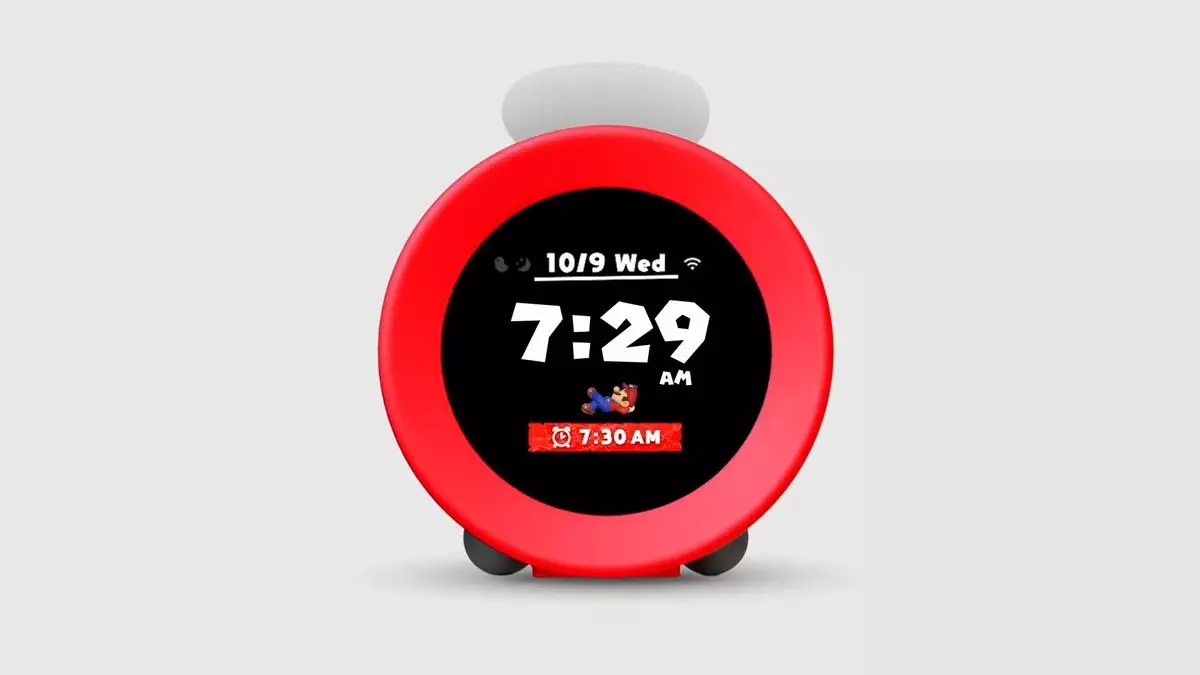Nintendo has long been a cornerstone of gaming culture, constantly evolving its product lineup with unique and quirky offerings. Enter Alarmo, a new alarm clock that promises to breathe life into the monotonous task of waking up. Rather than a typical alarm tone that jarringly disrupts your slumber, Alarmo engages its users with a variety of melodies and sound effects sourced from Nintendo’s beloved franchise games. This innovation appeals not just to the functionality of an alarm clock, but aims to elevate the morning routine of every Nintendo enthusiast.
At the heart of Alarmo’s allure is its extensive selection of music pulled from iconic Nintendo titles like “Super Mario Odyssey” and “Splatoon 3.” The ability to wake up to the cheerful sounds of videogame music has the potential to transform a groggy morning into an energizing experience. However, Alarmo does not stop with music; its motion sensor technology further enhances its interactivity. Imagine waking up to the delightful chime of coins being collected in the Mario universe as you turn in bed. Such features take personalized wake-up experiences to a new level yet raise the question: do we truly require an alarm to be this interactive?
Beyond just waking you, Alarmo offers a range of features that could be considered superfluous. It plays sleep-inducing sounds that tie into the gaming universe, seemingly aimed at aiding in relaxation. Additionally, the device boasts a quirky characteristic of displaying Nintendo character animations every hour. These animations might entertain, but they could also be viewed as unnecessary distractions in our already oversaturated digital environments. Adding to the intrigue, Alarmo tracks user movement and sleep patterns, potentially creating a comprehensive database of how gamers interact with sleep and waking routines. While data collection can lead to improved user experiences, one cannot help but feel a slight unease regarding privacy and the implications of such movements being monitored.
Perhaps the most eyebrow-raising aspect of Alarmo is its capability for connecting to the internet. This feature allows users to download additional sounds and updates, leading to the notion of a gaming alarm clock turning into a “DLC” model. Could this be the future of consumer electronics? While the concept of adding new features is appealing, one might argue that this dilutes the original purpose of a simple alarm clock, leading us to ponder if Alarmo has crossed into the realm of excess.
As amusing as the concept of Alarmo is, potential buyers may find themselves grappling with its necessity in their lives. While it adds a layer of whimsy and interaction to mundane routines, one has to ask if this device is truly needed. Does it serve a functional purpose, or does it cater primarily to the nostalgic whims of dedicated Nintendo fans? Only time will tell whether Alarmo will become a cultural staple or merely a curious gimmick in the realm of novelty gadgets. Nevertheless, it’s undeniable that Nintendo continues to find new ways to integrate gaming culture into everyday life.

